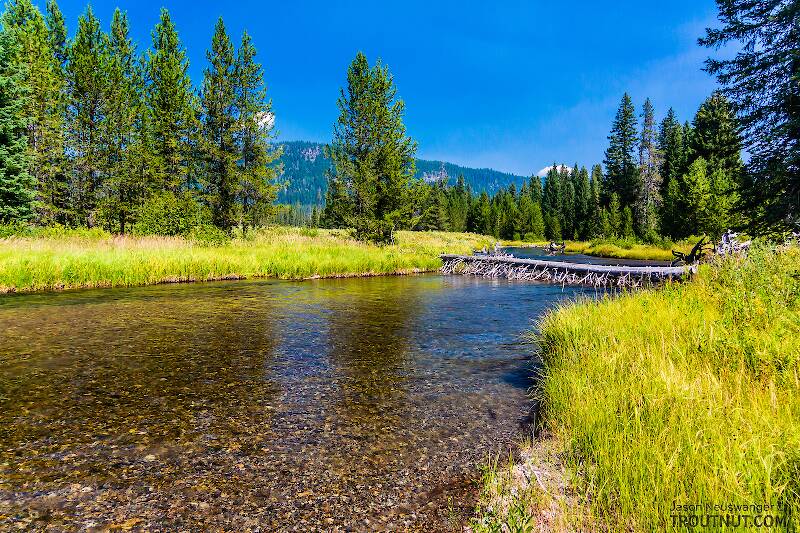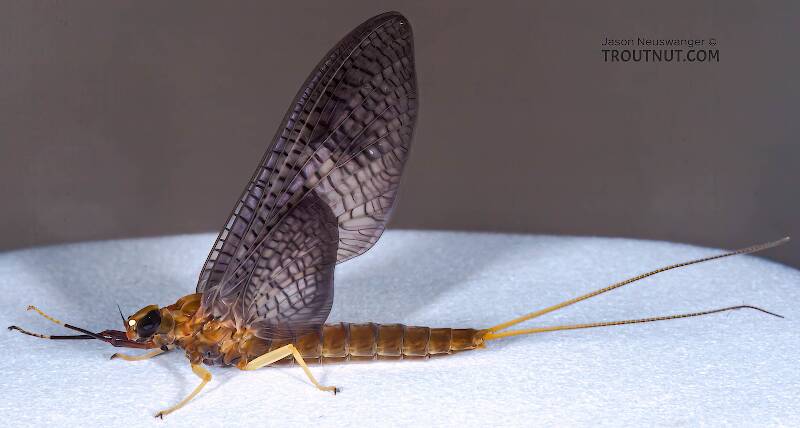
Blue-winged Olives
Baetis
Tiny Baetis mayflies are perhaps the most commonly encountered and imitated by anglers on all American trout streams due to their great abundance, widespread distribution, and trout-friendly emergence habits.
Featured on the forum

This dun emerged from a mature nymph on my desk. Unfortunately its wings didn't perfectly dry out.

Troutnut is a project started in 2003 by salmonid ecologist Jason "Troutnut" Neuswanger to help anglers and
fly tyers unabashedly embrace the entomological side of the sport. Learn more about Troutnut or
support the project for an enhanced experience here.
Kenlindblom
Posts: 2
Posts: 2
Kenlindblom on Jul 26, 2013July 26th, 2013, 5:24 pm EDT
I have seen Isos with the forward edge of their wings an olive color. These were also on the upper East Branch. I tied some using a permanent marker to tint the leading edges olive. But, it seems that the standard pattern works as well.
Taxon on Jul 26, 2013July 26th, 2013, 6:52 pm EDT
Welcome aboard, Ken. Isonychia seem to come in a wide variety of wing colors. Sounds like the ones you observed on the upper East Branch may have looked something like this:

Incidentally, you might want to update your profile with location info so folks aren't forced to guess what part of the world you are from.
Best regards,

Incidentally, you might want to update your profile with location info so folks aren't forced to guess what part of the world you are from.
Best regards,
Kenlindblom
Posts: 2
Posts: 2
Kenlindblom on Jul 27, 2013July 27th, 2013, 8:57 am EDT
The leading edges were a much more prominent green, covering about 25-30 %. The green was quite bright, not a subdued olive.
Martinlf on Jul 28, 2013July 28th, 2013, 6:02 am EDT
Upper East Branch of the Delaware?
The Iso body colors seem to vary a great deal as well, from green to gray to dark brown.
The Iso body colors seem to vary a great deal as well, from green to gray to dark brown.
"He spread them a yard and a half. 'And every one that got away is this big.'"
--Fred Chappell
--Fred Chappell
Quick Reply
Related Discussions
Topic
Replies
Last Reply




